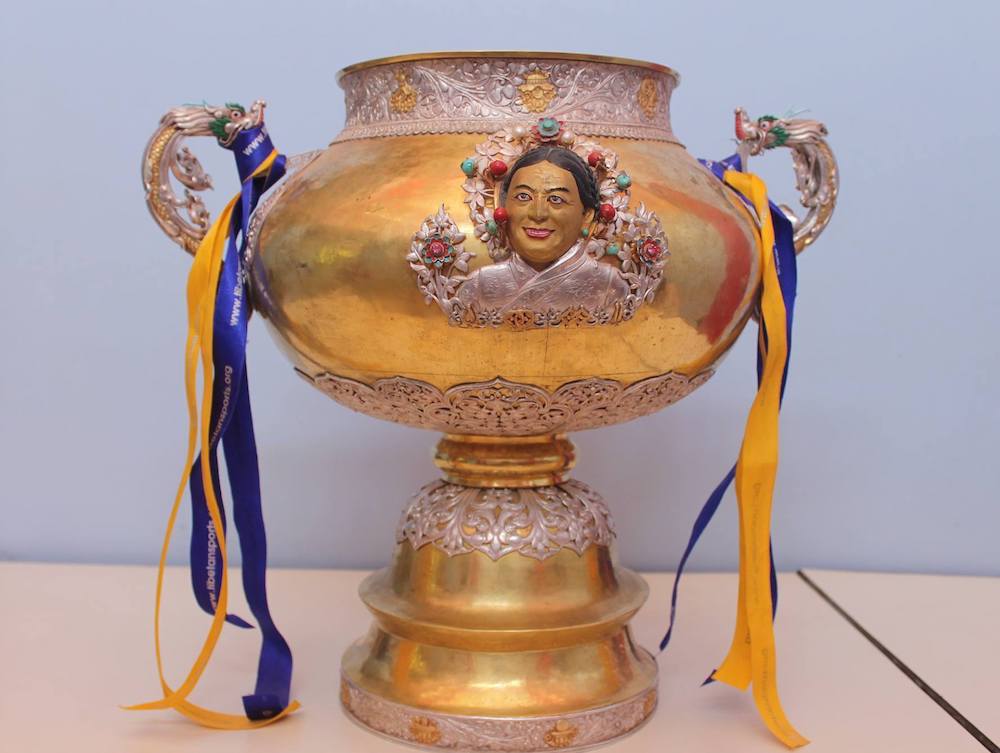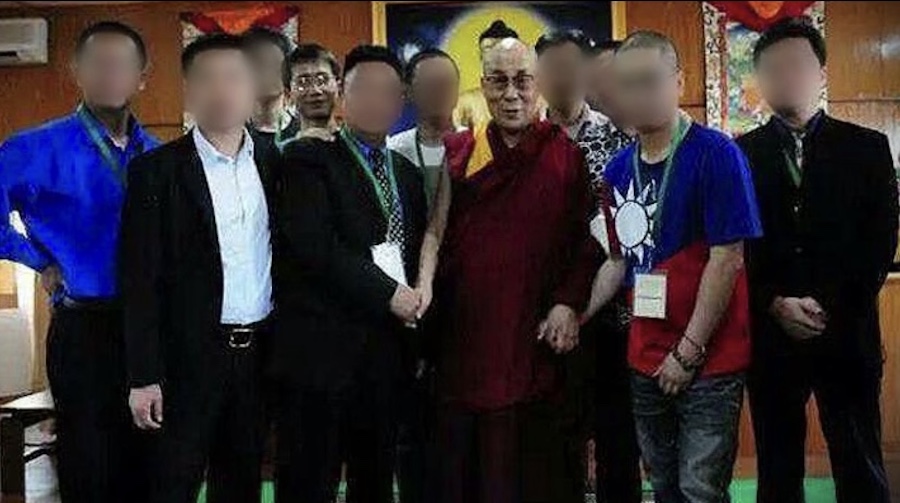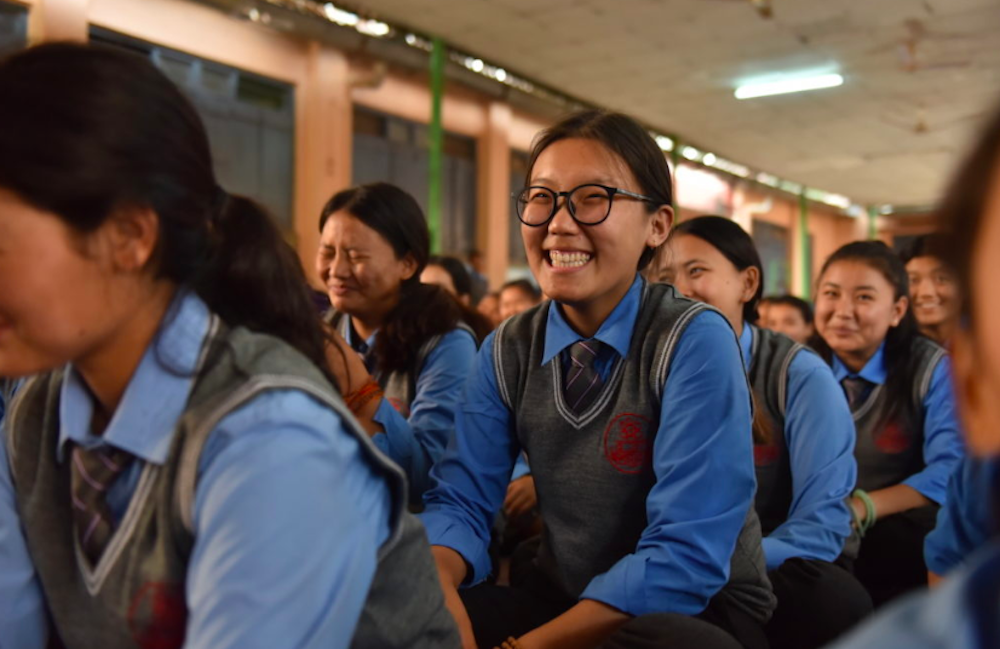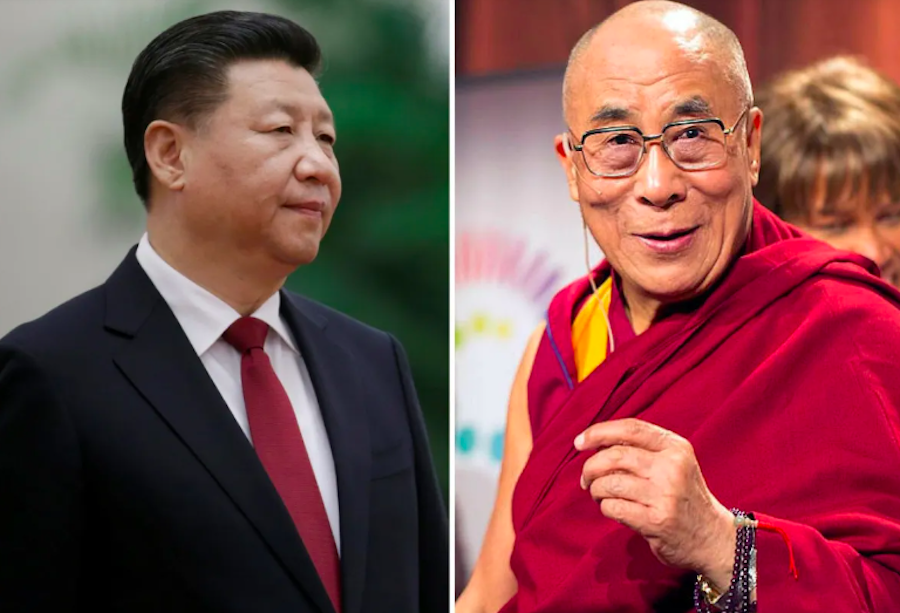By Calum MacLeod, USA TODAY
 LHASA — Chinese supermarket baron Zhang Xiaohong reveres Tibet’s austere Buddhist culture so deeply that he spent $12.5 million to build a luxury hotel that doubles as a Tibetan folklore museum.
LHASA — Chinese supermarket baron Zhang Xiaohong reveres Tibet’s austere Buddhist culture so deeply that he spent $12.5 million to build a luxury hotel that doubles as a Tibetan folklore museum.
The Brahmaputra Grand Hotel, in Tibet’s high-altitude capital of Lhasa, is the region’s only five-star hotel. It houses Zhang’s extensive collection of Tibetan antiquities, including a 1,000-year-old warrior’s costume. “I must do something to protect and promote Tibetan culture,” says Zhang, founder of the Bright Red Supermarket chain.
In reality, the culture Zhang wants to preserve risks disappearing beneath a surge of Chinese investment, migration and tourism. Beijing is accelerating its 5½-decade campaign to bring Tibet to heel. It is spurring high-growth economic policies and crushing political dissent in a drive to integrate the separatist-minded region into the rest of China.
Tibetan exiles say political repression is on the rise. In recent months, Chinese authorities have jailed several Tibetans, including monks, for possessing or distributing pro-independence leaflets, posters or photographs of the Dalai Lama, Tibet’s exiled spiritual leader.
In September, Chinese border guards fired on an unarmed group of about 80 Tibetans fleeing to Nepal through a Himalayan pass. One of those fleeing, a Buddhist nun, was killed. A Romanian mountaineer filmed the attack.
“The killing of Tibetans by Chinese authorities is a matter of common practice,” the Dalai Lama told Asahi Shimbun, a Japanese newspaper, last month.
Since May, Chinese officials have directed “an unprecedented wave of criticism” at the Dalai Lama, says his brother Gyalo Dhondup. “This is a major shift in their attitude, unprecedented in the past 27 years of contact with Chinese officials,” Dhondup told Radio Free Asia last month.
Economic initiatives
Beijing’s political crackdown has coincided with major economic initiatives that have brought:
•Tourism. In July, China completed construction of the 2,500-mile Beijing-Lhasa rail line, which carries the world’s highest-elevation passenger train. Since then, tourist arrivals — mainly of ethnic Chinese — have soared. In July and August, 913,000 travelers surged into the sparsely populated region, a 54% increase over the same two-month period a year ago, says Lhaba Phuntsok, a Tibetan who heads the official China Tibetology Research Center in Beijing.
Government banners hanging across the streets of Lhasa proclaim the railway to be “the happiness line for all the peoples of Tibet.”
Phuntsok says the railway creates a healthy incentive. For Tibetans to benefit economically from tourist traffic, he says, they must preserve the things that lured tourists in the first place: Tibet’s distinct culture and the pristine beauty of its high plateaus and mountains.
The Dalai Lama, though, has warned that a tide of outsiders brought in by rail could lead to “cultural genocide” in Tibet, which is home to just 2.8 million of China’s 1.3 billion people.
Zhang, the Chinese tycoon, says Chinese influences could overwhelm Tibet. “It’s a challenge, and we will have to work hard” to protect the local way of life, he says.
•Migration. Figures on the number of ethnic Chinese living in Tibet remain highly sensitive. At a news conference for foreign journalists in July, Tibet’s Beijing-appointed governor, Champa Phuntsok, declined to break down the current population of Lhasa.
He said the railway will bring “an inevitable increase” in Chinese workers, but maintained the official line that Tibet is more than 95% non-Han. Han is the ethnic Chinese majority.
Many Tibetan Lhasa residents say their capital of 500,000 people is now at least half Chinese. At the time of the Chinese takeover in 1950, the city’s population barely topped 30,000, and only a few dozen were Chinese.
“The authorities are trying to stamp out any breath of dissent and are deliberately encouraging people to move there,” says Robbie Barnett, a Tibet specialist at Columbia University in New York.
•Jobs and investment. Beijing has poured money into giant infrastructure projects, and private investment has followed. But opportunities created by a boom in construction, retail and services have gone disproportionately to Chinese newcomers. Only 10% of the workers on the new rail line were Tibetans, says Zhu Zhensheng, senior engineer at the Ministry of Railways. Most of the current railroad staff is Han, he says.
At Zhang’s Brahmaputra Grand Hotel, where rooms range from $170 to $1,100 a night, the management team was imported from neighboring Sichuan province. Only a third of the employees are Tibetan, sales manager Hong He says.
Mistrust runs deep
In October, hundreds of young Tibetans staged a rare public protest in Lhasa to complain about government job discrimination. The protest followed the regional government’s decision to fill 98 of 100 job openings with ethnic Chinese applicants.
Beijing says it has taken steps aimed at protecting Tibetan culture, such as ensuring that 70% of the books published in the region are in the Tibetan language. Government officials also have loosened restrictions on Tibetan religious worship and reopened many of the monasteries and holy sites that were closed in the 1980s.
Even so, the government keeps a firm grip. “Every month, a work team from the religious affairs bureau and the police come to the temple to make us oppose the Dalai Lama,” says a young monk at the Jokhang temple, Lhasa’s holiest site. He declined to be identified for fear of persecution.
The vice director of administration at the temple, monk Ngawang Quzha, acknowledges that all monks must undergo “patriotic study lessons.”
Interviewed in the presence of officials from the regional government, he says: “Most of the monks in Tibet would not hope the Dalai Lama returns to Tibet.”
The mistrust between Chinese and Tibetans is deep.
“The Tibetan people are very suspicious,” Barnett says, “and the Chinese are suspicious that Tibet is not grateful for this largesse.”
Mao Pengfei, a farmer who moved to Lhasa from China’s Henan province in 2003, says he has no Tibetan friends. “We live in different areas, and I don’t speak any Tibetan,” says Mao, who now works as a taxi driver.
Cultures clash in Lhasa
Fan Liming, a Chinese engineer who helped build a rail station 70 miles outside Lhasa, scratches his head at the slow pace and religious underpinnings that are central to Tibetan life. “I saw Tibetan pilgrims prostrate themselves on the ground, get up, walk three paces, then prostrate again,” Fan says. “They could take months to get to Lhasa. It’s difficult for us Han to understand their faith. These people are not in a hurry.”
Tashi Tsering, a Tibetan author who has funded construction of 69 rural schools to preserve the written language, lives near Jokhang in a house squeezed between two Chinese-owned fast-food restaurants — Dicos and California Beef Noodles. He marvels at the new rail system but says it shouldn’t be used to bring in migrants. “I hope the Chinese government will never make that decision,” he says.
Development has brought shopping malls and giant apartment blocks to Lhasa. The city’s old quarter is now dotted with shiny, tiled buildings familiar throughout China. Yuthok Lam, the main shopping street, has been modernized in keeping with Tibetan architectural style, albeit with one incongruous import — plastic palm trees.
Tourists like to see the original buildings, “but that doesn’t suit development needs,” says Que Longkai, director of architecture at Lhasa’s Tibet University. Chinese outsiders “are not wolves,” says the academic, a Lhasa resident for the past five years. But “development is the only way.”
Kelsang Phuntsok, president of the exile group Tibetan Youth Congress, based in Dharamsala, India, says China’s view of development does little for the people he left behind. “Tibetans don’t need skyscrapers. They need education, food, security and freedom,” he says. “A hungry man doesn’t need a Mercedes.”









